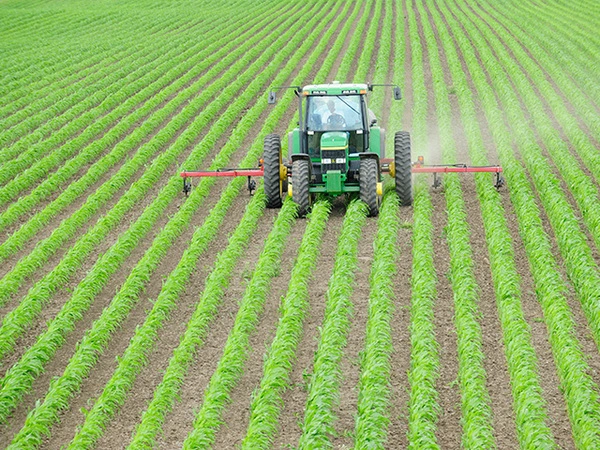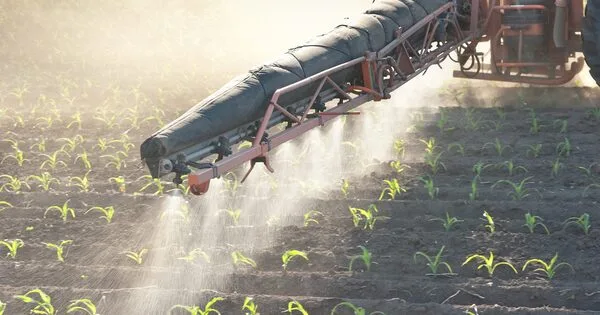Fertilizers are made from natural ingredients, so their production necessitates the use of natural resources such as natural gas, water, and land. TFI member companies reuse and reclaim the resources they use, which not only saves money but also improves the sustainability of fertilizer production. Fertilizer manufacturers employ technologies and processes that capture and reduce greenhouse gas emissions, achieve zero water discharge, capture waste heat for energy production, and reclaim all mined lands.
Researchers demonstrated how nitrogen fertilizer could be produced in a more sustainable manner. This is required not only to protect the environment but also to reduce reliance on imported natural gas and improve food security.
Fertilization of the soil with nitrogen, phosphorus, and potassium is required for intensive agriculture. While phosphorus and potassium can be mined as salts, nitrogen fertilizer must be laboriously produced from air nitrogen and hydrogen. Furthermore, the production of hydrogen is extremely energy-intensive, requiring large amounts of natural gas or, in China, coal. Nitrogen fertilizer production is vulnerable to price shocks in the fossil fuel markets, in addition to having a correspondingly large carbon footprint.
Paolo Gabrielli, a Senior Scientist at ETH Zurich’s Laboratory of Reliability and Risk Engineering, has worked with Lorenzo Rosa, Principal Investigator at Carnegie Institution for Science in Stanford, US, to investigate various carbon-neutral nitrogen fertilizer production methods.
There’s no avoiding the fact that we need to make agricultural demand for nitrogen more sustainable in the future, both for climate and food security reasons.
Paolo Gabrielli
In a study published in the journal Environmental Research Letters, the two researchers conclude that a transition in nitrogen production is possible and that such a transition may also increase food security. However, alternative production methods have advantages and disadvantages. Specifically, the two researchers examined three alternatives:
- Producing hydrogen as usual with fossil fuels, but instead of emitting the greenhouse gas CO2 into the atmosphere, it is captured in the production plants and permanently stored underground (carbon capture and storage, CSS). This necessitates not only an infrastructure for capturing, transporting, and storing CO2, but also significantly more energy. Despite this, it is a relatively efficient method of production. However, it has no effect on reducing reliance on fossil fuels.
- Electrifying fertilizer production by producing hydrogen through water electrolysis. This requires approximately 25 times the energy of today’s natural gas-based production method, implying that massive amounts of electricity from carbon-neutral sources would be required. This may be an appealing approach for countries with an abundance of solar or wind energy. However, given plans to electrify other sectors of the economy in the name of climate action, it may result in competition for sustainable electricity.
- Creating hydrogen from biomass for fertilizer production. Ironically, because it requires a lot of arable land and water, this production method competes with food production. However, the study’s authors point out that it makes sense if the feedstock is waste biomass, such as crop residues.

The scientists state that the key to success is likely to be a combination of all these approaches, depending on the country and on specific local conditions and available resources. In any case, it is imperative that agriculture make more efficient use of nitrogen fertilizers, as Rosa stresses: “Addressing problems like over-fertilization and food waste is also a way to reduce the need for fertilizer.”
India and China at risk
In the study, the scientists also sought to identify the countries of the world in which food security is currently particularly at risk owing to their dependence on imported nitrogen or natural gas. The following countries are vulnerable to price shocks in the natural gas and nitrogen markets: India, Brazil, China, France, Turkey, and Germany.
Decarbonizing fertilizer production would reduce this vulnerability and increase food security. At the very least, electrification via renewables or the use of biomass would reduce the dependence on natural gas imports. However, the researchers put this point into perspective: all carbon-neutral methods of producing nitrogen fertilizer are more energy intensive than the current method of using fossil fuels. In other words, they are still vulnerable to certain price shocks – not on natural gas markets directly, but perhaps on electricity markets.
Nitrogen producers facing change
According to scientists, decarbonization is likely to change the composition of countries that produce nitrogen fertilizer. Russia, China, Egypt, Qatar, and Saudi Arabia are currently the largest nitrogen-exporting countries. Except for China, which must import natural gas, all of these countries can draw on their own reserves of natural gas. Countries that generate a lot of solar and wind power and also have enough land and water reserves, such as Canada and the United States, are likely to benefit from decarbonization in the future.
“There’s no avoiding the fact that we need to make agricultural demand for nitrogen more sustainable in the future, both for climate and food security reasons,” Gabrielli says. The conflict in Ukraine is affecting the global food market not only because the country exports a lot of grain, but also because the conflict has driven up natural gas prices. As a result, the price of nitrogen fertilizer has risen. Nonetheless, some fertilizer producers are known to have temporarily ceased production due to the exorbitant cost of gas, making production uneconomical for them.
















